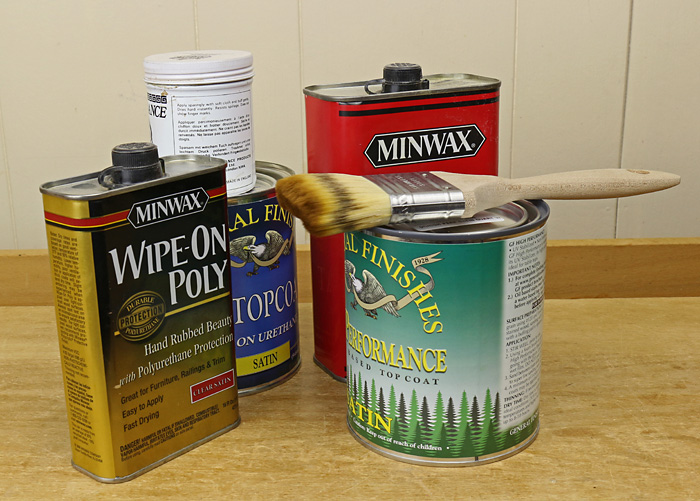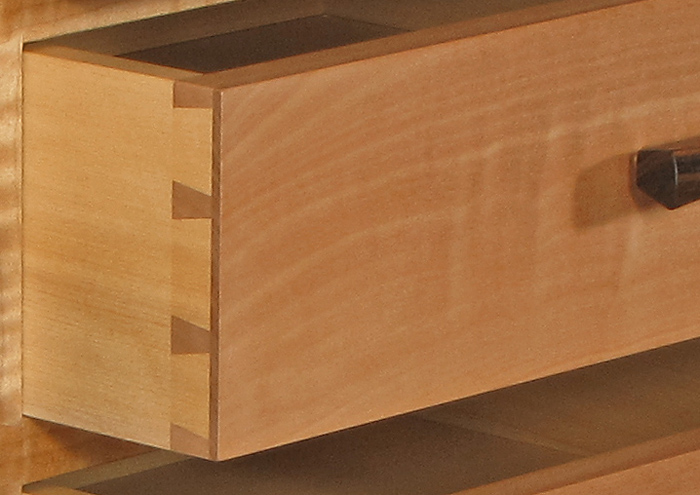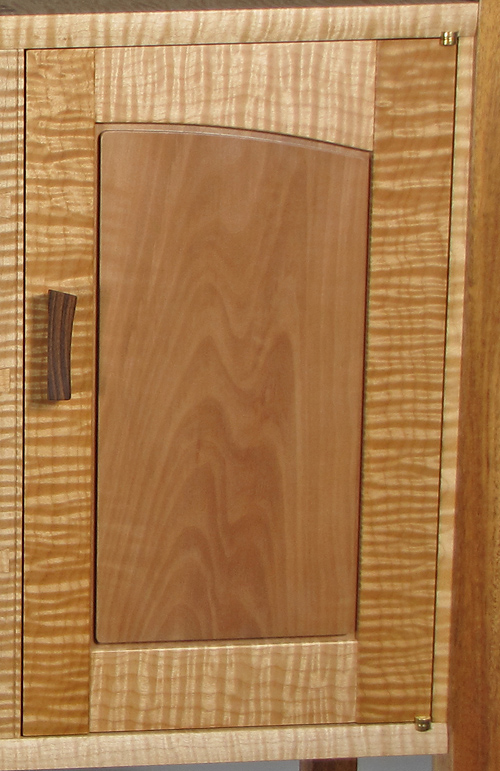Working in solid wood is a joy but wood movement must always be taken into account. Ignoring it is no solution but understanding it is. Here are five things every woodworker should know.

1. Wood movement does not stop.
It is often thought that once the solid wood has been fully processed — kiln dried or air dried — that it is somehow “settled” and will no longer undergo significant dimensional change as the humidity of the surrounding air changes, a process commonly called wood movement. That would be nice, but it’s not true.
In fact, the moisture content of wood continually changes as the ambient humidity changes, always seeking equilibrium. Along with this, the actual dimensions of a board across the grain (width and thickness) change. Wood movement does not stop.
This happens year round and day to day. A drawer that is snug but moveable when the humidity is low may be stuck closed next week when the humidity is significantly higher.

This means that you always must plan for ongoing wood movement when designing work in solid wood. For most wood species, seasonal movement of dimensions tangential to the growth rings (e.g. the width of a flat-sawn board) is almost twice that of dimensions that are radial to the growth rings (e.g. the width of a quarter-sawn board). Longitudinal movement along the grain is negligible.
2. What about finishes?
Doesn’t finishing wood prevent the entry and exit of moisture? No, it does not. It slows it, and there is value to that, but it does not stop it. The slowing effect varies with the type of finish and the number of coats but no practical finish completely stops moisture exchange between wood and the surrounding air. This has been studied and well documented by the U.S. Forest Products Laboratory in their Wood Handbook.

How about three coats of tung oil? This affords almost no moisture excluding effectiveness. Spar varnish? Better, but it won’t stop it. OK, six coats of urethane varnish or shellac — surely that must stop moisture exchange and make it unnecessary to account for wood movement. No again. Those heavy finishes do slow the process more but they do not stop it, so you still have to deal with ongoing wood movement. The exceptions are with unconventional wood treatments such as acrylic infusion.
Note that all of this pertains to water vapor entering and exiting the wood. Repelling liquid water from the surface of the wood is a different matter, which is not the main issue in ongoing wood movement.
3. Wood movement matters on a large scale but also on a small scale.
Certainly, the seasonal change in the 36″ width of a tabletop is substantial, perhaps 1/2″ between a dry winter and a humid summer, depending on the wood. But wood movement is also significant on a smaller scale where you might not consider it at first.
For example, carcase dovetails assembled, glued and planed perfectly flush in winter will have their long grain surfaces expanded noticeably proud of the end grain surfaces in summer. The cycle will continue as the seasons change but in most cases there is no practical consequence to this.

The same general effect occurs with a dovetailed drawer. There it does matter, so to make a drawer that operates smoothly year round, the sides should be made to fit in the drawer pocket with a just bit more allowance if the piece is completed in the dry winter, and more snugly if the work is completed in the humid summer. On the same theme, larger allowances must be made for fitting the height of the drawer front and sides.
Even where you cannot see, inside a mortise and tenon joint, for example, there is wood movement. The small but conflicting dimensional changes of the tenon against the mortise walls must be taken into account, such as by using an appropriate adhesive that has slight elasticity in the glue line.
4. Specifically, plan for wood movement.
Fortunately, you can reliably predict the amount of wood movement and plan for it. The specifics are beyond the scope of this post, but the main points are that it should be done and it is easy. There really is no excuse for winging it and being disappointed in what happens next year to a piece of furniture.
Basically, you need to know the wood species, the grain orientation (flat-sawn, quarter-sawn, or rift), the humidity in your shop when the piece is being assembled, and the range of humidity where the piece will live.
Now, if your woodwork is going to a climate-controlled museum, you won’t have to bother with all of this, but for the world of practical use, you should. Formulas can be found in the Forest Products Laboratory Wood Handbook or Bruce Hoadley’s Understanding Wood, but the easiest approach is to use Lee Valley’s handy wheel chart called the Wood Movement Reference Guide or a smart phone app such as The Woodshop Widget.

5. Wood movement can be managed successfully.
There’s no need to be mystified or worried about wood movement. It’s simply the nature of this wonderful material that we have chosen to work with. Though you ignore it at your peril, wood movement can be managed very successfully to produce beautiful, durable woodwork.

Time-tested techniques are available for the many different situations where movement comes into play in solid wood constructions. Drawer and door fitting allowances, table top fastening techniques, joint designs, and carcase design principles are among them. In fact, many of the most aesthetically pleasing features of woodwork such as the frame and panel are actually derived from the need to account for wood movement.

Share tips, start a discussion or ask one of our experts or other students a question.
No Responses to “5 Things Every Woodworker Needs to Know About Wood Movement”